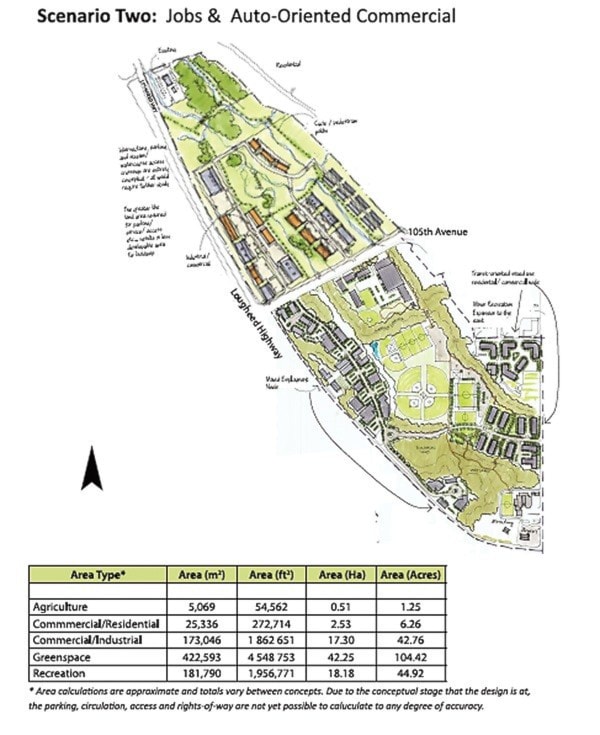Maple Ridge council has rejected its consultant’s advice and is sending just one option for Albion flats to the Agricultural Land Commission – but that isn’t a bad way to go, says a regional planner with that agency.“That’s an acceptable way of doing it. Here’s what we want and here are some of the problems.“As long as they have something … that deals with mitigation, then we’ll look at it – no promises,” said Tony Pellett, with the commission.Maple Ridge council decided last week to send only one of four scenarios for Albion flats to the commission for comment.That’s council’s decision, Pellett said.“Council’s in charge of what they send to us.”The land commission has previously said it wouldn’t consider removing land on the west side of 105th Avenue from the agricultural reserve, but could consider a proposal for the east side, where soil quality is poorer and the lots more fragmented.But the Scenario 2 favoured by council calls for development on both sides of 105th Avenue and Lougheed Highway, and proposes saving only 1.25 acres of farmland of the more than 300 acres that comprise Albion flats, most of which lies in the Agricultural Land Reserve.For Mayor Ernie Daykin, it’s a matter of getting creative about developing Albion flats, while also providing what the ALC considers a net benefit to agriculture. “Throwing money at an exclusion is not going to guarantee success.”Instead, the commission would consider money that would improve local drainage systems and soil or putting land into the reserve in one location, in exchange for removing it for the Albion project.One proposal he considered is for local landowners Steve and John Wynnyk to put their cattle farm property on 240th Street into the Agricultural Land Reserve – in exchange for taking their land out of the reserve in Albion flats.“That was just something ruminating in my mind.”Daykin said the planning at this point doesn’t yet involve landowners in the area. But they can attend the open house and express what they’re willing to do.The staff report will look at how other cities have addressed loss of agricultural land when development takes place. Council can then include its own proposals for that in its submission to the ALC.Once staff fine-tune the scenario, the public can have input at an open house in late March. The scenario then goes to the commission, and the south coast panel will review the rough sketches and indicate what it might consider for exclusion from the land reserve.After that, council can revise its plan and file a formal application to exclude the land.Council’s process differs from the consultant’s – who suggested all four scenarios go to the ALC, which then would allow the commission to indicate the one with the best chance of land exclusion.But council’s method should only take slightly more time, said Pellett.And it could be a good ploy to relieve pressure about the issue, he added, saying council could send in the application, have it turned down, then council could say, “Let’s get down to business.”
